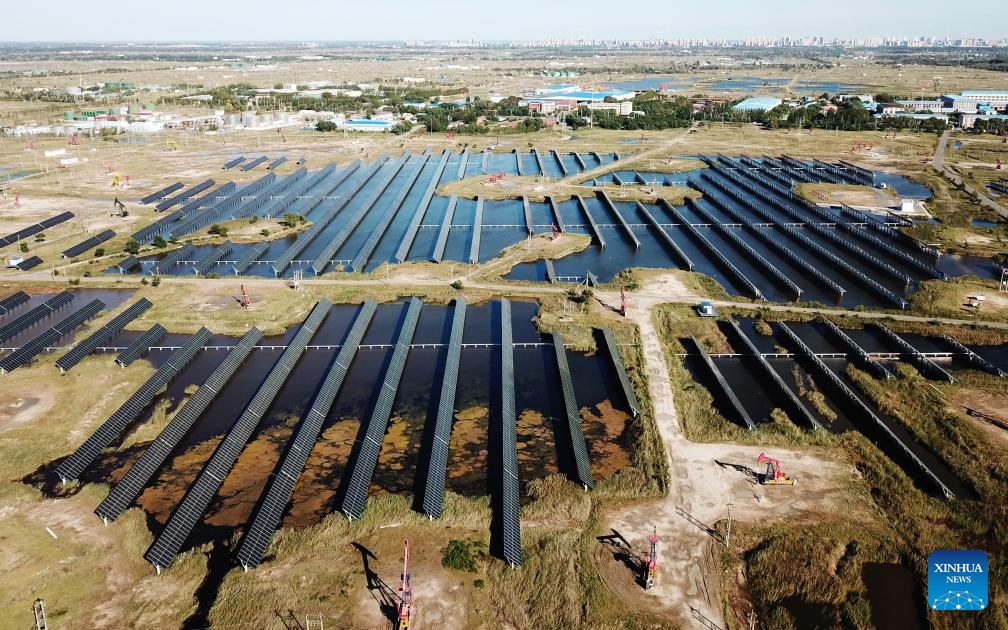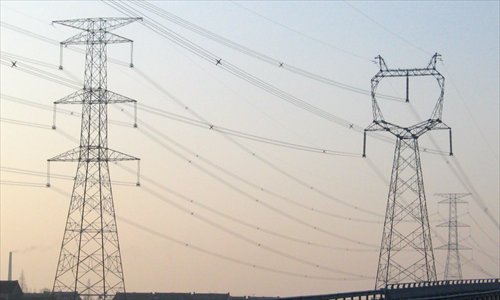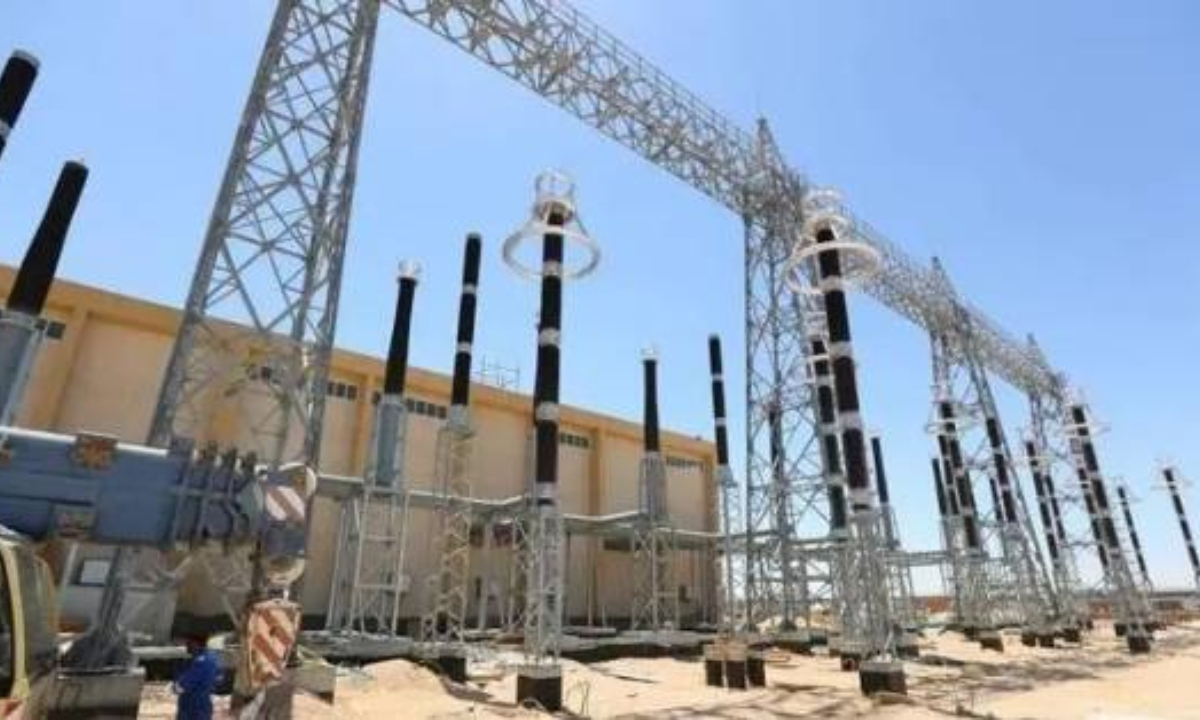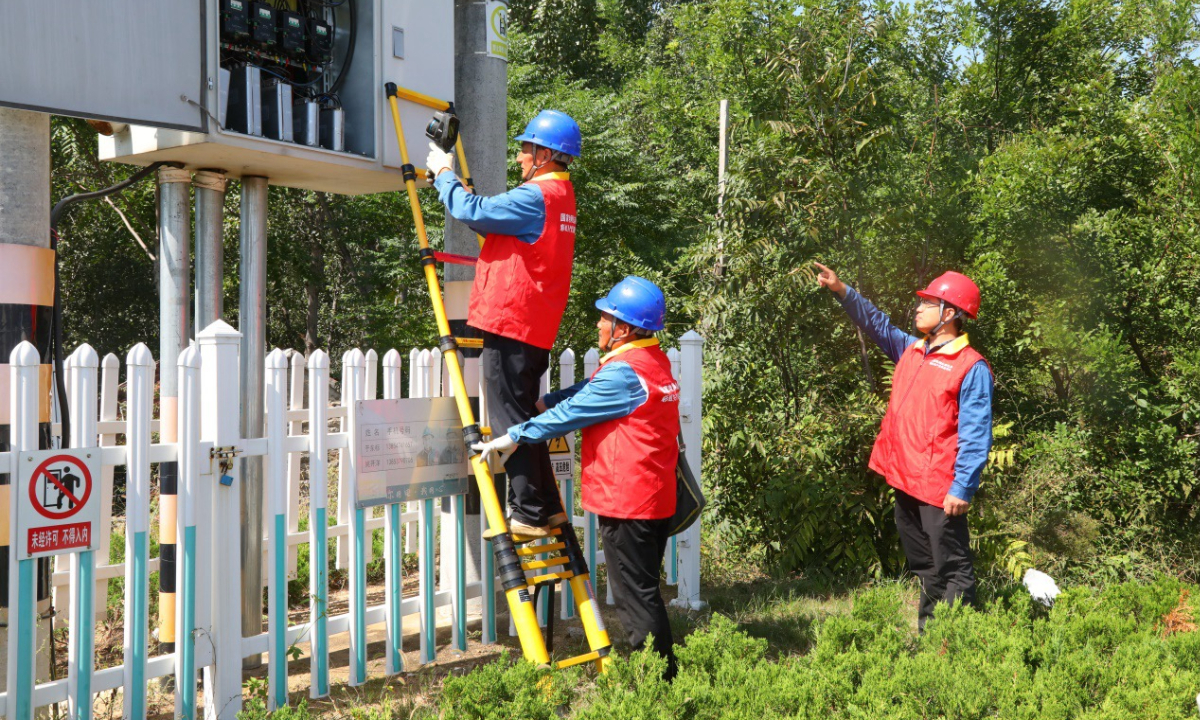
This aerial photo taken on Sept. 19, 2023 shows the Xinghuo water surface photovoltaic power station of Daqing Oilfield under PetroChina in Daqing, northeast China's Heilongjiang Province. This power station has an installed capacity of 18.73 megawatts, and its average annual electricity generation is equivalent to that produced by burning 8400 tonnes of standard coal, which in turn reduces carbon dioxide emissions by 22,000 tonnes.(Photo: Xinhua)
China's electricity supplies will be generally secure in the coming winter season, the National Energy Administration (NEA) said on Monday, although some users in the southwestern, northwestern, eastern and southern regions such as Yunnan Province and the western region of North China's Inner Mongolia Autonomous Region could face pressure due to extreme weather, a lack of hydropower and uncertainty in safeguarding fuel supply.
NEA spokesperson Zhang Xing said during a press conference on Monday that the "maximum capacity of the nationwide power grid during the usage peak period this winter may surge by 140 million kilowatts from last year, a relatively large expansion." Data NEA revealed in January showed that the power grid load in the winter of 2022 remained at about 1.1 billion kilowatts, with the peak load reaching 1.159 billion kilowatts.
China's national power demand has been rising since the start of the second half, and total electricity consumption in September increased by 9.9 percent year-on-year, according to Zhang.
At the press conference, the NEA vowed to take steps to enhance electricity supplies this winter, including maintaining high output of coal and natural gas, rectifying electricity trade mechanisms and accelerating the construction of the power grid. In particular, provinces such as Yunnan should scale up supplies of thermal coal, while South China's Guangdong and Hainan provinces, where electricity demand is high, should secure natural gas supplies.
China's electricity generation ability has withstood a number of challenges, including safeguarding supplies in the summer season this year, which was the Earth's hottest since global records began in 1880.
During the summer, China's power grid capacity and volume of daily generated power both set records, with 50 million kilowatts and 1.5 billion kilowatt-hours more than in 2022, said Zhang. He stressed that despite a rapid rise in demand, China did not limit power supplies in the summer.
Electricity supplies in the winter of 2023 will face the same challenges as last year, and there is little chance for broad power curbs based on the current preparations, an industry observer surnamed Lin told the Global Times on Monday.
Coming with China's accelerating economic recovery and increasing industry activity in the third quarter of 2023, total electricity use in September rose by 9.9 percent year-on-year, data from the NEA showed, with growth up from 3.9 percent in August.
"The growth rate of 9.9 percent was a quite high figure for current operational conditions, and it may reflect the low base number in September 2022," said Lin, noting that the whole power system should be aware of a potential supply gap due to rapid growth in demand or sudden surges.
The China Electricity Council predicted on October 25 that fourth-quarter electricity use growth will be faster than in the previous quarter as well as in the same period of 2022
Total electricity consumption this year is likely to hit 9.2 trillion kilowatt-hours, up 6 percent year-on-year. The growth rate in the fourth quarter may stand at 7 percent year-on-year, the council predicted.



